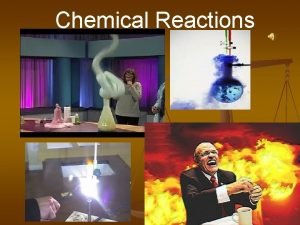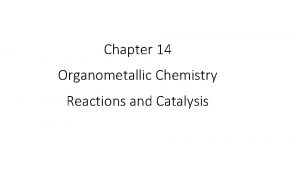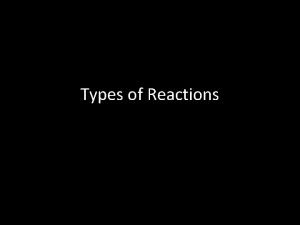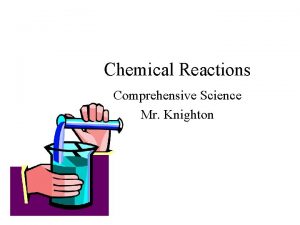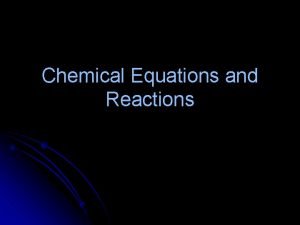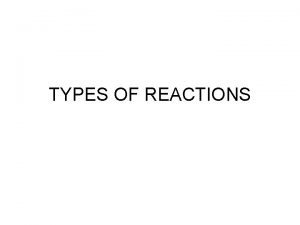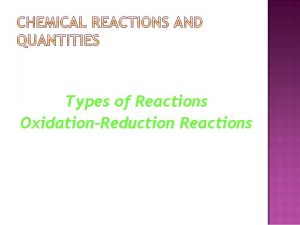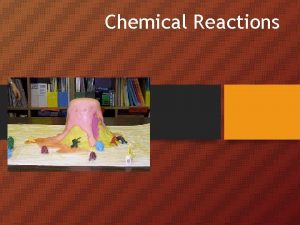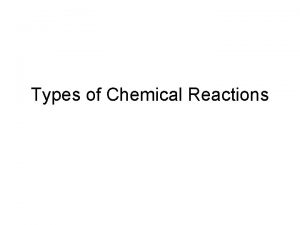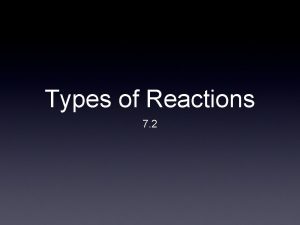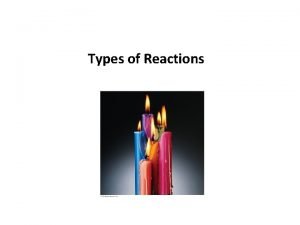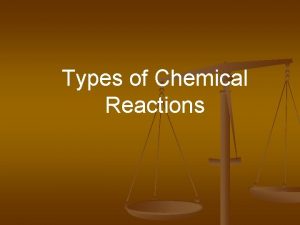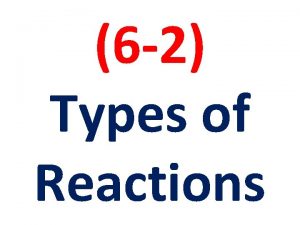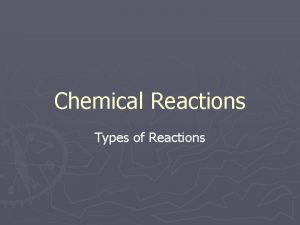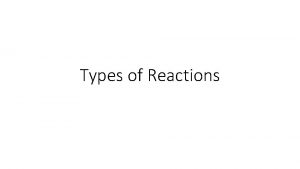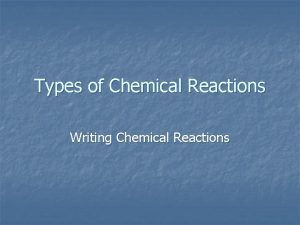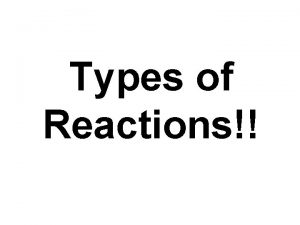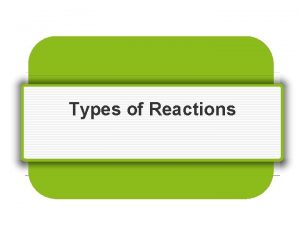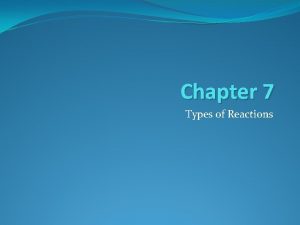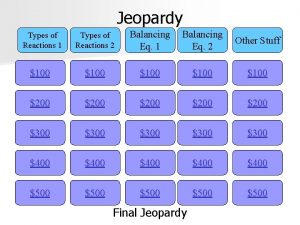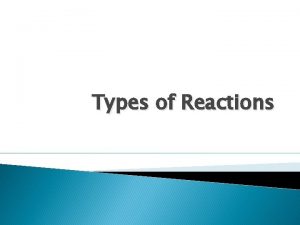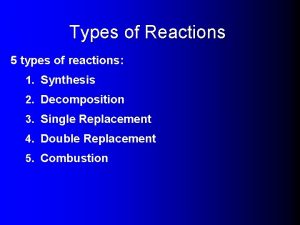Types of Reactions Chemistry 21715 No Drill Drill

























- Slides: 25

Types of Reactions Chemistry 2/17/15

No Drill – Drill Quiz n Take out a sheet of notebook paper and your drills. For each date listed, write the question AND the answer. You have 10 minutes. n 1/29, n HW: 2/3, 2/9 pg. 14 Types of Reactions (and balancing)

Objectives n IWBAT n n n Translate a verbal description of a chemical reaction into a formula equation, showing states Balance chemical equations by adjusting coefficients Identify the five types of chemical reaction

Quiz Discussion n Let’s n n take a look at two quizzes Organic Chem Quiz Translating/Balancing Quiz n. I am going to do a Re-Do session on Monday for the Translating/Balancing Quiz. If you come, you may take a NEW quiz on Tuesday, after school, or before school by Tuesday. n n If you can’t come to the Monday Re-Do session, you MUST come before school two days for help. You MUST let me know that you’re interested by Thursday!!!!

Types of Reactions Research n You have been assigned a type of chemical reaction. You have done research to define and get important information about that reaction. n Next, you will meet with a group and share your information. n Then, your group will come up with an analogy to explain the different types of reactions.

Groups Synthesis Decomposition 1 O'Neill, Courtney J Burns, Jakim N 2 Sraver, Madison L 3 Thompson, Kayla A 4 5 Single Double Combustion Replacement Faulkner, James P Yarrish, Maharjan, Stephanie R Bini Boyd, Scott C Carpenter, Fellers, Benjamin J Cassidy G Braswell, Blackburn, Johnston, Christopher Brett W Dylan D M Von Neida, Watson, Rhinevault, Federline, Clary, Anna Jacob H Ashley N Brittany C Brianna K W Jordan, Noack, Evan Walsh, Marshall, Weir, Amoyiah Lou T Tessa J John N Kaitlyn M C

Types of Reactions – Analogies n Your group will come up with an analogy to explain the different types of reactions. n Let’s share some!

Types of Reactions Assessment

A + B AB

Synthesis

A free element reacts with a compound to form a new compound and to release one of the elements of the original compound

Single Replacement (Single Displacement)

3 Ca. Cl 2 + 2 Al. N 2 Al. Cl 3 + Ca 3 N 2

Double Replacement (Double Displacement)

2 KI + Cl 2 2 KCl + I 2

Single Replacement

Synthesis

Two ionic compounds react to form two new ionic compounds; “switching partners” AB + CD AC + BD

Double Replacement (Double Displacement)

AB + C AC + B

Single Replacement

n ONE compound breaks down into simpler substances n General Equation: AB A + B

Decomposition

Types of Reactions Practice n pg. 14 – Types of Reactions n Using your notes, balance the equation and then predict the type of reaction that the equation represents.

Exit Ticket n Identify n n n the type of reaction: C 10 H 8 + 12 O 2 10 CO 2 + 4 H 2 O Mg + 2 H 2 O Mg(OH)2 + H 2 2 H 2 O 2 H 2 + O 2 8 Fe + S 8 8 Fe. S Pb. NO + 2 KI Pb. I + 2 KNO 32 2 3
 Unit 5 chemical reactions answers
Unit 5 chemical reactions answers 4 types of chemical reactions
4 types of chemical reactions 5 types of reactions chemistry
5 types of reactions chemistry Synthesis and combustion reaction
Synthesis and combustion reaction Section 2 classifying chemical reactions
Section 2 classifying chemical reactions Redox reaction example
Redox reaction example Section 2 reinforcement classifying chemical reactions
Section 2 reinforcement classifying chemical reactions Types of reactions
Types of reactions Type of reactions chemistry
Type of reactions chemistry Chapter 8 review describing chemical reactions
Chapter 8 review describing chemical reactions Chemistry reactions
Chemistry reactions Section 1 atoms elements and compounds
Section 1 atoms elements and compounds Chemistry in biology section 2 chemical reactions
Chemistry in biology section 2 chemical reactions Ib chemistry functional groups
Ib chemistry functional groups Organic vs inorganic chemistry
Organic vs inorganic chemistry Different types of redox reactions
Different types of redox reactions Types of reactions
Types of reactions 5 types of reaction
5 types of reaction Single replacement reaction examples
Single replacement reaction examples Types of chemical reactions
Types of chemical reactions 4 types of chemical reactions
4 types of chemical reactions Two types of nuclear reactions
Two types of nuclear reactions Four types of chemical reactions
Four types of chemical reactions Five chemical
Five chemical 5 general types of chemical reactions
5 general types of chemical reactions What are the 4 types of chemical reactions
What are the 4 types of chemical reactions








